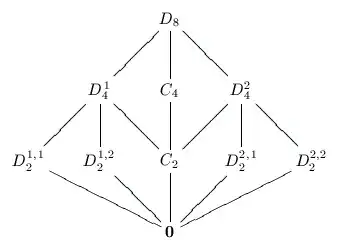1) Yes. A lattice isomorphism $f:\mathcal{L}(G) \to \mathcal{L}(H)$ is called a projectivity from $G$ to $H$. These are discussed in some detail in Roland Schmidt's book Subgroup lattices of groups. A projectivity is determined by its action on the cyclic subgroups (rather than on their generators, the elements of the groups).
A projectivity must map a cyclic group onto a cyclic group: being cyclic is a property of the lattice of subgroups. Similarly the class of finite groups and the class of locally finite groups are preserved by projectivities.
For instance, a group $G$ is a quasi-cyclic $p$-group (quasi-cyclic = cyclic or Prüfer $p$-group) if and only if the lattice of subgroups is a chain.
An isomorphism obviously induces a projectivity, but more subtly, certain bijective functions on groups that treat cyclic subgroups well (Theorem 1.3.1) induce projcetivities, and a projectivity is induced this way iff when $f(\langle g \rangle) = \langle h \rangle$, that $g$ and $h$ have the same order. As Ittay Weiss mentioned, this need not be the case, as cyclic groups of prime order show.
In some sense these are the “only” problem. Obviously the chain lattices (quasi-cyclic $p$-groups) don't depend on the prime, so each lattice is realized by infinitely many non-isomorphic groups. Lattices detect direct products of coprime order subgroups. Suzuki showed, that as long as a finite group does not have a cyclic direct factor, then only finitely many other groups (up to isomorphism) have the same subgroup lattice.
This is a survey of the first 40 pages of this 500+ page book, and I skipped some very nice results that don't directly answer your question.
2) Yes. GAP and Magma are the standard packages for working with large finite groups like $\operatorname{GL}(n,p)$. I find that GAP is easier to understand and modify, while Magma has faster implementations. For instance GAP takes 40 seconds to find the subgroup lattice of GL(4,2), while this takes under a second in Magma. Magma can find the subgroup lattice of GL(6,2), but I don't believe GL(7,2) is in practical range. Magma should not be greatly affected by changing the ground field, except for the explosion in the actual number of subgroups; however many of GAP's algorithms have exponential dependence on the ground field.
Make sure you really want the full subgroup lattice before asking for it. It is huge.
GL(4,2) has 48337 subgroups in 137 classes. GL(4,3) has 141224990 subgroups in 3085 classes. GL(5,2) has 54091780 subgroups in 1411 conjugacy classes. GL(5,3) has 10842232856355 subgroups in 93251 classes. See Enumerating all subgroups of the symmetric group for some asymptotics of the subgroup of permutation matrices.
